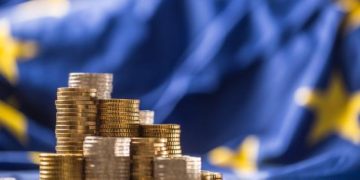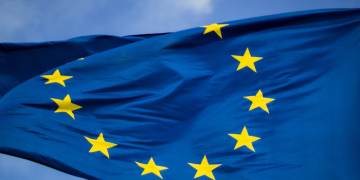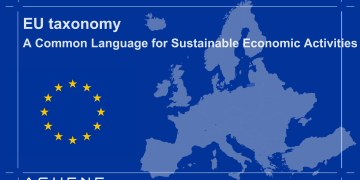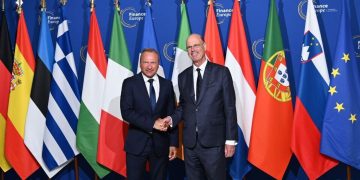Introduction
Over two decades after its introduction, the euro remains the world’s second-most important currency, a cornerstone of European economic integration, and a critical pillar of global finance. But as the 2020s unfold—with geopolitical realignments, digital currencies on the rise, and a reconfiguration of global trade—the euro faces new challenges and opportunities that will shape its trajectory for decades to come.
The global monetary system, once anchored almost exclusively by the dominance of the US dollar, is gradually moving toward a more diversified structure. Within this evolving landscape, the euro is simultaneously strengthening its position in certain domains while losing ground in others. Europe’s internal economic divergences, the competitiveness gap with the United States, and the continent’s vulnerability to external shocks complicate its ambition to serve as a robust alternative to the dollar.
This article explores the euro’s current state in the global monetary system, assessing its performance in foreign exchange markets, reserve holdings, international payments, and global debt issuance. It examines both the strengths that give the euro global influence and the structural weaknesses that limit its international appeal. Finally, it considers whether the euro is likely to gain or lose global importance in the years ahead.
1. The Euro’s Position in Global Currency Markets
1.1 The euro’s enduring — but challenged — second place
For most of its existence, the euro has maintained a solid second place behind the US dollar in global foreign exchange reserves, international payments, and currency trading volume. As of 2025:
- 20% of global FX reserves are held in euros.
- 38% of SWIFT international payments involve the euro.
- The euro accounts for 17–20% of global currency trading volume, depending on the bilateral pair.
But stability at the top hides more nuanced shifts. While the euro retains its spot, it has not made significant gains in international share since the early 2000s. In fact, the euro’s global presence has remained remarkably stable for a decade, neither expanding nor collapsing but hovering in a narrow band.
The euro is a solid rival to the dollar—but not yet a challenger.
1.2 Exchange rate volatility and market sentiment
Between 2023 and 2025, the euro experienced notable cycles of depreciation and appreciation driven by:
- Interest rate differentials versus the Federal Reserve
- Changing expectations about European economic growth
- Shifts in global risk appetite
- Energy supply stability
Market sentiment toward the euro hinges heavily on confidence in the European Central Bank’s ability to manage inflation. The ECB’s cautious easing cycle in 2024–2025 helped support the currency by maintaining an attractive interest rate differential relative to peers.
But despite these tailwinds, the euro remains vulnerable to global shocks and internal fragmentation—factors that limit its long-term appeal as a global reserve currency.
2. Global Reserve Currency Status: Stability Without Expansion
2.1 Why countries hold euro reserves
Central banks hold euro reserves for a variety of reasons:
- Trade relationships: Europe is one of the largest importers and exporters in the world.
- Financial stability: Euro-denominated debt markets are deep and liquid.
- Diversification: Many emerging markets want alternatives to excessive dollar reliance.
Over the past decade, the euro has maintained a stable 20% share of global reserves. This stability is itself impressive given the volatility in global markets. However, the euro’s share has not increased since the early post-crisis years, indicating barriers to further expansion.
2.2 The rise of competing currencies
The euro’s global position must be viewed in light of rising diversifiers:
- The Chinese yuan has increased in use, especially after being included in the IMF’s SDR basket.
- The Japanese yen, though structurally weak, remains a safe-haven currency.
- Commodity-rich nations increasingly experiment with local-currency trade settlements.
Yet despite these competitors, none display the combination of institutional strength, market liquidity, and regulatory stability that the euro offers.
2.3 Europe’s missed opportunity after US financial volatility
Between 2020 and 2024, the United States experienced periods of fiscal and monetary instability that could have prompted a shift toward the euro. But Europe failed to capitalize fully due to its own internal fragmentation:
- Disputes over fiscal rules
- Growth stagnation
- Uneven energy transition progress
- Political tensions within the eurozone
These constraints prevented the euro from expanding its global role.
3. The Euro and International Trade
3.1 The euro as a trade invoicing currency
The euro is widely used in international trade—particularly for:
- Energy imports
- Machinery and industrial equipment
- Food and agricultural exports
- Tourism-related cross-border payments
Eurozone exporters often invoice in euros to reduce currency risk, and non-European nations frequently use the euro for transactions with Europe due to its stability.
However, the euro’s share in trade invoicing has plateaued. Markets that traditionally relied heavily on the euro, such as Eastern Europe and parts of North Africa, are increasingly diversifying their economic links toward fast-growing emerging markets.
3.2 Energy trade and the euro’s strategic weakness
The 2022 energy crisis exposed Europe’s vulnerability: the continent’s dependence on imported gas left it at the mercy of global commodity markets.
Although Europe has since diversified energy sources, the crisis raised questions about the euro’s reliability during external shocks. Countries that trade with Europe are less inclined to adopt the euro broadly if they perceive the eurozone economy as fragile in the face of geopolitical disruptions.
4. Euro-Denominated Debt Markets
4.1 The strength of sovereign and corporate bond markets
Euro-denominated debt is one of the currency’s key strengths. Europe hosts some of the world’s largest bond markets:
- German Bunds serve as safe-haven assets.
- French OATs, Dutch, Belgian, and Austrian bonds contribute to market depth.
- The ECB’s quantitative easing programs have made euro debt markets more liquid.
In addition, corporate borrowing in euros remains robust due to low borrowing costs, making the euro a preferred funding currency for multinational firms.
4.2 Green bonds: Europe’s competitive advantage
Europe is the global leader in the issuance of green and sustainable bonds. The region’s regulatory framework and environmental policies have fueled large-scale euro-denominated issuance from both sovereigns and corporations.
This positions the euro strongly in the fast-growing ESG finance sector.
4.3 Fragmentation risk remains
A persistent weakness is the lack of a unified safe asset equivalent to US Treasuries. Although EU-level bonds issued during COVID-19 recovery efforts represent progress, the supply is still too small to anchor the global system.
As long as Europe lacks a single, centralized bond market, the euro cannot rival the dollar’s dominance in global debt markets.
5. Geopolitics and the Euro: Pressure and Opportunity
5.1 US-China tensions and Europe’s balancing act
Geopolitical shifts create both opportunities and constraints for the euro.
As US-China tensions intensify, many nations seek non-aligned economic partners. Europe, despite internal divisions, remains a relatively neutral actor. This enhances the appeal of the euro for countries wanting to diversify away from great-power rivalry.
However, Europe’s economic reliance on both the United States and China limits its ability to assert independent monetary leadership.
5.2 Sanctions, cross-border payments, and the euro
European sanctions regimes—particularly those targeting Russia since 2022—have reshaped global perceptions of Western currencies. While the euro remains trusted, some countries fear overdependence on Western financial systems.
This could limit reserve growth but also encourage the expansion of alternative payment platforms in which the euro might participate.
5.3 Energy geopolitics
Europe’s rapid shift away from Russian energy has improved its long-term geopolitical stability but has also increased short-term exposure to global LNG markets.
The euro will gain appeal only if Europe secures stable, diversified energy partnerships.
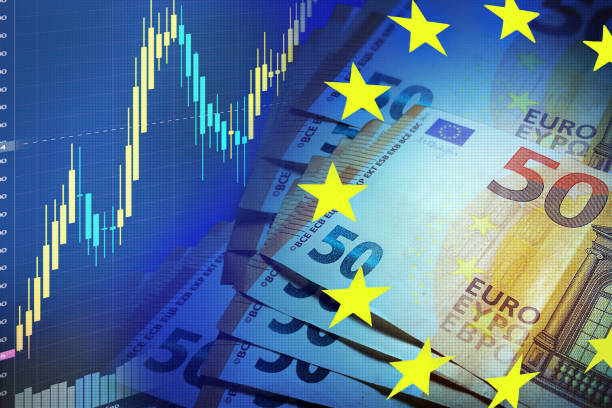
6. The Digital Euro and the Future of Monetary Technology
6.1 The promise of a central bank digital currency
The digital euro is one of the most significant monetary projects of the decade. The ECB envisions the digital euro as:
- A secure, privacy-protecting payment instrument
- A means to reduce reliance on private tech-driven payment systems
- A tool for modernizing cross-border settlements
- A bridge to programmable money in Europe
If implemented effectively, the digital euro could boost the euro’s global influence by making euro-denominated payments more efficient and accessible.
6.2 Challenges and skepticism
However, numerous obstacles remain:
- Privacy concerns from European citizens
- Uncertainty about the role of commercial banks
- Questions about how cross-border use will be regulated
- Competition from private-sector digital currencies
The digital euro will likely succeed only if Europe coordinates effectively and avoids the bureaucratic paralysis for which it has become stereotyped.
6.3 Global implications
If the digital euro becomes a leading cross-border settlement currency, it could:
- Facilitate euro-denominated trade
- Reduce transaction costs
- Strengthen the euro as a global reserve asset
- Undermine private stablecoins that currently dominate digital trade
The digital euro represents one of the few opportunities for Europe to leapfrog competitors in financial innovation.
7. Structural Obstacles Preventing Euro Expansion
Despite its strengths, several structural constraints limit the euro’s global rise.
7.1 Economic stagnation
Europe’s slow growth reduces confidence in its long-term economic trajectory. Investors may prefer dynamic economies like the US, China, or Southeast Asia when placing long-term bets.
7.2 Fragmented fiscal systems
A shared currency without a shared fiscal policy remains a fundamental contradiction. Europe’s patchwork of national budgets prevents:
- Deep unified bond markets
- Strong counter-cyclical fiscal support
- Clear crisis response frameworks
Until fiscal integration deepens, the euro’s global ambitions will be capped.
7.3 Political fragmentation
Europe’s political complexity—from coalition governments to rising populism—creates uncertainty that undermines confidence in long-term currency stability.
7.4 Demographic pressures
A shrinking workforce and low fertility rates reduce potential economic growth, limiting Europe’s capacity to sustain a globally dominant currency.
8. Scenarios for the Euro’s Future
The euro’s trajectory over the next decade could follow one of three broad paths.
Scenario 1: The euro strengthens its global role
This occurs if:
- Europe deepens fiscal integration
- The digital euro succeeds
- EU energy independence strengthens economic stability
- Global diversification away from the dollar accelerates
In this case, the euro’s reserve share could rise toward 25–28%.
Scenario 2: The euro maintains its current position
This is the most likely scenario. The euro remains a strong global currency but does not gain significant ground.
- Reserve share stays near 20%
- Euro debt markets remain robust
- The currency offers stability but not dominance
Scenario 3: The euro gradually declines
This becomes possible if:
- Europe suffers prolonged recession
- Political fragmentation accelerates
- Digital dollar and yuan innovations outpace Europe
- Structural reforms stall
In this case, the euro could fall toward a 15% global reserve share.
Conclusion: A Stable Currency in an Unstable World
The euro’s global role is best characterized as stable but constrained. It is not losing ground but neither is it expanding aggressively. Its global importance reflects Europe’s political integration, financial depth, and regulatory stability—but its limitations mirror Europe’s structural weaknesses, slow growth, and fragmented governance.
As the world enters a new phase of monetary competition, the euro’s future will depend on Europe’s ability to modernize, innovate, and deepen integration. Without these steps, the euro will continue to occupy a strong—but ultimately secondary—position behind the dollar.














